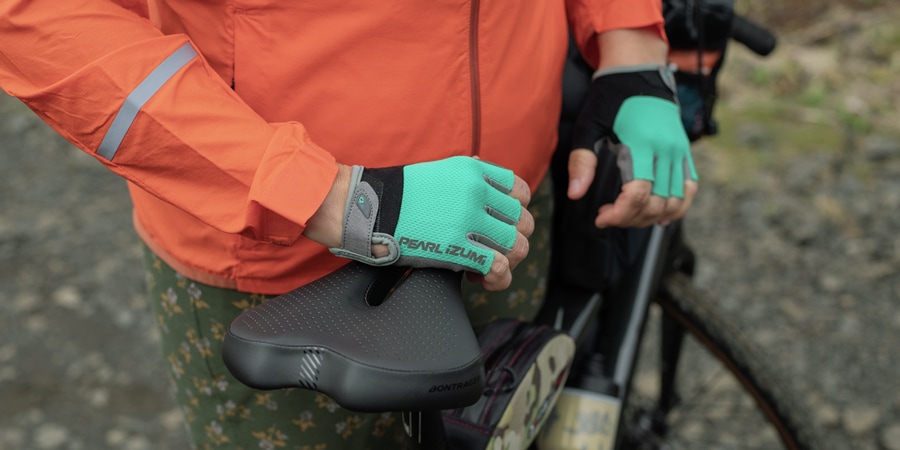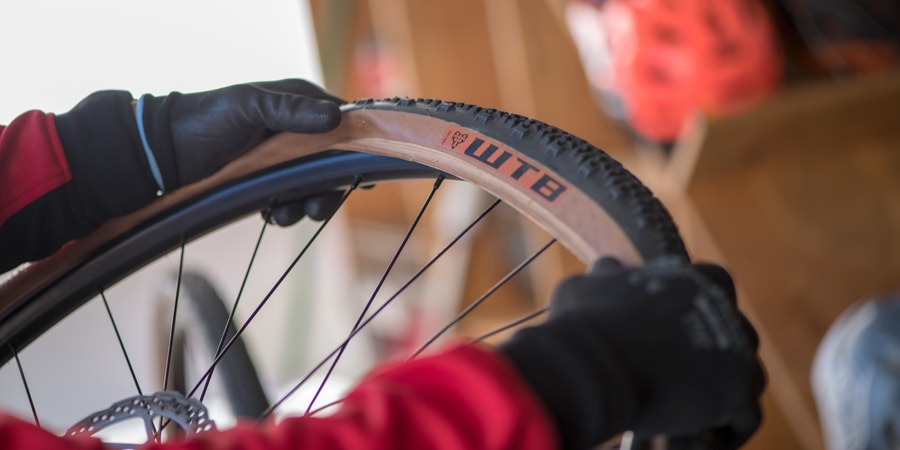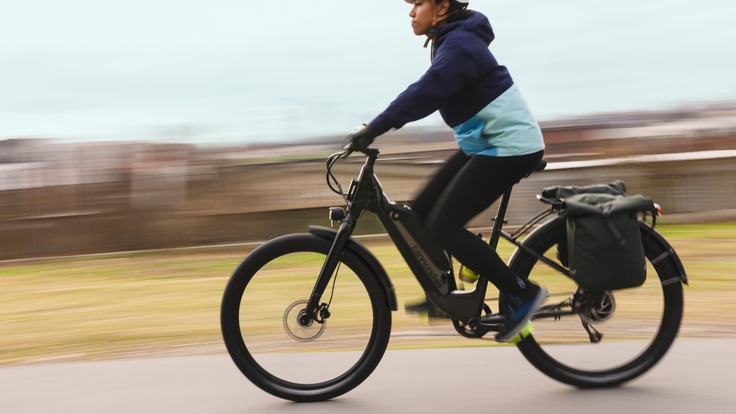Little compares to the joy of riding a bike. But any bike, whether it's brand new or simply new to you, is going to benefit from care or a little adjustment. As a new rider or one returning to the saddle after a while, you need time to get acquainted with how your bike works and feels.
This article provides an overview of things you might expect from your bike, offers tips on how to make adjustments to improve your comfort, and discusses potential mechanical issues that may arise and how you can resolve them.
Hands-on help at REI: Whether you're adjusting your bike or dialing in fit, a skilled bike technician or sales specialist can help
How to Make Your Ride More Comfortable

Along with your newfound freedom on two wheels, you may find a bit of physical discomfort as you're adjusting to a new activity, particularly if you're not accustomed to sitting on a saddle (bike seat) for stretches of time. But there are also easy ways to improve physical comfort right away, namely by getting padded clothing for your hands and butt, and by making sure your bike fits.
Get Padded Shorts and Gloves
The main weight-bearing touch points between body and bike are your butt and your hands. Adding padding in these areas can help make your ride more comfortable and provide added support.
For your butt: Invest in padded bike shorts equipped with a chamois (pronounced "sham-ee") to put a plush, chafe-reducing layer between your bottom and the bike seat. Padded bike shorts can help minimize friction, wick moisture and cushion bumps. If you're still feeling some friction down there, look into chamois cream that is applied directly to your skin to reduce chafing.
For your hands: Once you start logging more miles in the saddle, you'll realize how much your hands support your upper body's weight. Your palms are bound to get sore, but cycling gloves with cushioned inserts can increase comfort. Changing out the grip tape or bike grips can also provide a pillowing effect.
Adjust Your Bike to Fit You Better
Another way to ensure a more comfortable ride: Have key components of the bike adjusted or changed out to fit your body's proportions. Small adjustments to the handlebar and saddle positions can make a difference in how comfortable your bike feels. Learn more in bike fitting basics.
Properly set your seat height: Moving the seat to a height that feels comfortable for your legs is key. Ideally, you want a slight bend in your knee (roughly 80-90 percent of full leg extension) when your foot is at the bottom of your pedal stroke, while still being able to climb on the bike comfortably (e.g., without having to stand on tiptoes). When adjusting the seat height, make small adjustments to the height—as little as 1/4" of height can have a noticeable effect. Loosen the seatpost clamp, move the seatpost to the appropriate height and then retighten the clamp. The clamp will either use a quick release lever that can be opened and closed to tighten, or a hex bolt, which requires a tool to adjust. Make sure to adjust the seat while wearing the apparel and shoes you plan to ride in, as their thickness can affect your correct seat height.
Consider swapping out your saddle: After multiple rides, if you feel pressure on your perineum (seat contact area), it might be time to get a bike saddle that's better suited to your body mechanics and the type of riding you do. Learn more by reading How to Choose a Bike Saddle. If possible, bring your bike to a store to consult with an expert and try out different saddles in person. Keep in mind that simply adding more cushion on the seat isn't always better. Instead, find a seat that fits your anatomy.
Consider swapping out parts to change your riding position: If you're feeling discomfort in your hands or wrists, this may be a sign that your hand position is too low on the bike. It could mean that too much of your weight is being supported by your hands, which may lead to pain or numbness on longer rides. Sometimes, changing out the stem (the part of the bike that connects the handebar to the bike) or the handlebar itself can alter your body position, making it more upright and reducing the weight on your hands to improve comfort. This is typically a fix best left to professionals, so consider taking your bike to a shop for help.
How to Make Mechanical Adjustments to Your Bike
Just like any blossoming relationship, you and your bike will need to work through that initial awkward stage. Expect a few mishaps early on, but also study up on how to fix them—or avoid them entirely.
Expect a Break-in Period
If you notice a change in the way your bike is operating, don't ignore it. Bring it into a shop. It's common on a new bike for components to break in over the course of the first several rides, which can affect their performance. The shifting may lose precision; the brakes might rub or feel loose, and you may notice new sounds like squeaks or rattles.
If (and when) this happens, take your new ride to a bike shop—and quickly! The bike will work more efficiently and will be far more fun to ride when it's working properly. Plus, you'll prevent bigger issues from manifesting later down the road. Continuing to ride on components that are out of adjustment can cause damage parts that are expensive to repair. Shops like REI's bike shop offer complimentary adjustments for one year after purchase.
Be Prepared for Common Problems
Certain mechanical issues, such as flat tires and chain mishaps, are inevitable with any bike—even if you're just riding it on a trainer!

Flat tire: Now that you're a cyclist, it's good to know how to address this inevitable mechanical issue. Start with our handy tutorial, which covers the five basic steps to fixing a flat: Taking off the wheel, removing the tube, finding the reason for the flat, patching or replacing the tube, and reinstalling the wheel. The process might take a little longer than you expect (especially if you're new to it), but with time and practice it will become second nature.
Derailed chain: If you go over a big enough bump or maybe just lay your bike down wrong, your chain might slip free from the chainring. This is a simple fix, though a dirty one. Simply grip the chain, pull it upward and reinsert it into the grooved teeth of the chainring. Turn the pedals forward after placing a link on the cog tooth. (It also helps to flip the bike over so it won't roll away, and to shift to the lowest gear so that you're trying to put the chain back on the largest chainring.) If your chain comes off a few times in a row, however, you likely have some larger issues. Bring it to a bike shop and let the experts troubleshoot the problem.
Broken chain: A broken chain is a more complex repair issue that likely will require a higher level of bike maintenance know-how and specialized tools. If you're up for the challenge, learn more about how to change or repair a bike chain. If you prefer not to learn how to do this (no judgment!), bring it to a bike shop.
Prevent Issues Before They Occur
The best way to avoid frustrating (and costly) bike maintenance issues is to catch small issues before they turn into major problems. Before every ride, run through a pre-ride bike inspection that includes inflating the tires and checking to be sure the chain is clean and lubed.
Other Considerations
Your bike fits. You're prepared to tackle smaller maintenance issues. And you know when a problem needs expert eyes. You're ready to roll—almost.
How to Carry Your Stuff
There are many different systems for carrying items along with you as you ride. If you're just out for a short jaunt, perhaps a cycling jersey with pockets will be enough to hold your extra tube, a snack and a bike repair kit. (Learn more about What to Bring in a Bike Repair Kit.) Also consider a water bottle cage (or two) to handle fluid needs, and possibly installing a phone mount. If you're heading out for an extended period, look into bike bags and panniers. (For buying advice, read How to Choose Bike Racks and Bags.)
How to Transport Your Bike
Too often the desired trail is far from your doorstep. Trying to cram a bike into your car can be frustrating and may even cause damage to your bike. A bike rack lets you carry multiple bikes easily and securely. Learn more about all of your options in How to Choose Car Racks.
Mapping a Route
Now it's time to figure out where to go! If you're not familiar with your local trail systems or if you're riding in a new place, check out People for Bikes Ride Spot. Another option is a simple Google search such as "trails near me" and turning on the bike-friendly route option in Google Maps.
Article written by Courtney Holden. Courtney moved to Boulder, Colorado, to pursue her dream of hiking, biking, skiing and writing about it. So far, things are working out. In the past four years, she's transitioned from 100-mile days on her road bike to backpacking with a stuffed rabbit, Tonka truck and toddler in tow. Her husband comes too. She confesses to preferring Diet Coke to craft beer. REI member since 2011.

